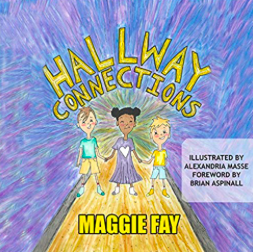It’s Computer Science Education Week. My social media feed is filled with amazing things happening in classrooms around the globe. It’s filled with ideas, resources and endless opportunities for educators to network with one another and add to their teacher toolbox. It’s filled with facts and figures about computer science, and why it’s important for our students and their future. It’s also filled with statistics. Statistics about girls and STEM, female representation in computer science, and a call to action to show our girls that not only can they pursue opportunities in this field, but that they in fact belong there.

A few years ago, the shyest, kindest and most compassionate little girl walked through my door. She loved to draw, create and write stories. She loved to follow the rules, and she did. What she didn’t love was technology. She’d bring a box of crayons and a pile of paper to the computer lab every week. She’d push buttons on an iPad only because I asked her too. I hadn’t yet convinced her to step outside her comfort zone, but I wasn’t ready to quit. The day I brought two little robots into the classroom was the day that changed everything for her. She learned to code. She learned to persevere. She became a problem-solver. She became a risk-taker. She began to question things for the benefit of her own learning. She asked the important whys and hows. She didn’t wait for an answer anymore…she started finding them on her own. In fact, that quiet and shy, never stepped out line 7-year-old, became the kid who stood in front of an auditorium of 200+ giving her own talk about the importance of coding and robotics and how it made her feel smart and how she learned that it was okay to make mistakes, because you could just try again – her words. She found her passion.
This post is my call to action. This is not my first piece about girls and technology, and it won’t be my last. As educators, we have an obligation to show our girls a world beyond what they think is possible. We need to put computers and robots in their hands. We need to encourage them to wonder and explore. I am not proposing we build an army of girl coders – though that would be pretty epic – I’m simply saying that it is our responsibility as educators to give them experiences and opportunities to step outside their comfort zone and take those risks that allow them to discover their passion. That passion may just be computer science. Innovation requires perspective and perspective requires diversity.

Daphne has a passion for STEAM and credits interactive technologies for offering learning experiences that encourage growth-mindset, develop problem-solving skills and build perseverance. Her experience in the classroom has proven to support even the most hesitant learners in building confidence in their abilities and engaging in the learning process. Her forward thinking and creative experiences have been shared with colleagues through informal networking, as well as cultivated opportunities to coach and support other educators in building their own technological competency at various educational levels. Daphne is committed to supporting student success, meeting students where they are, appreciating each individual, and finding opportunity to engage and motivate students in creative, innovative ways. Follow Daphne on twitter here and on her blog here!
Thank you Daphne for the excellent post and congratulations on the book! While we wait for Gracie to hit the bookstores, check out these gems as well!
Think Like a Coder!: Connecting Computational Thinking to Everyday Activities
Coding is everywhere! Follow along with a girl and her dog as they explore computational thinking in their everyday activities. Colourful illustrations and easy to access text help readers recognize that many of their daily explorations – cooking, playing, and even being outdoors – provide opportunities to explore and problem solve. Readers will be entertained by the antics of the girl and her dog, and parallels can be drawn between their daily work and that of computational thinkers. A great text for anyone wanting to introduce, and learn more, about computational thinking in the world around us.
Scratching The Surface: An Intro To Coding In Middle School
Twenty-first-century learning requires students to create, collaborate, and think critically. Progress “STEMs” directly from immediate feedback and a personalized learning platform. Coding forces students to problem-solve, make mistakes, and overcome barriers because programs can only run if written correctly. In this activity guide, learn how to integrate coding activities into everyday curriculum projects!
This activity guide consists of seven of Brian’s favourite coding activities in Math, language Arts, Science and Game Development! Check out his free coding courses at http://codebreaker.teachable.com.
Hallway Connections: Autism and Coding
Follow Lucas and Liam’s coding adventure as they make a new friend! Lucas and Liam have been assigned a coding project by their teacher. At first they are more excited about working in the hallway than doing the project, until they meet Lily, a girl who has autism. The boys learn that not everyone communicates in the same way, but with the hallway coding activity, making friends is easy and fun!




 For all the kids who grow up in a small town and think they don’t stand a chance. You do. I was once that kid.
For all the kids who grow up in a small town and think they don’t stand a chance. You do. I was once that kid.